Exhibition
April 2019 - March 2020
-
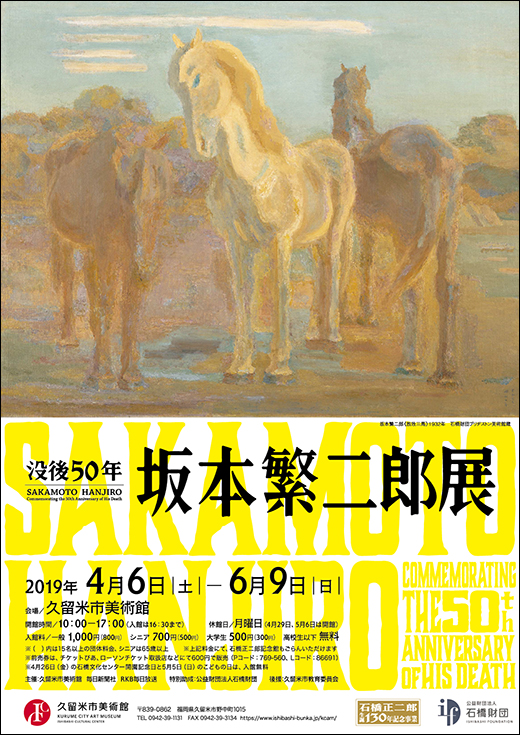
Sakamoto Hanjiro: Commemorating the 50th Anniversary of His Death2019.04.06(Sat)–2019.06.06(Sun)
Sakamoto Hanjiro (1882-1969) was born in Kurume, Fukuoka. After returning from studying in Europe, he chose to work in Yame, another town close to Kurume, and ended his life there. The theme of his pictures underwent gradual change, from cows until his studies in Europe, via horses after returning to Japan, still lifes, particularly noh masks, after the war, to the moon in his final years. In this exhibition, which marks fifty years since his death, with focus especially on the still lifes he continued to depict throughout his lifetime, the process of the maturity of his paintings together with the progress of his life will be revealed. Sakamoto’s relationship with Aoki Shigeru (1882-1911), a close friend and rival from the same town, will also be introduced.
-
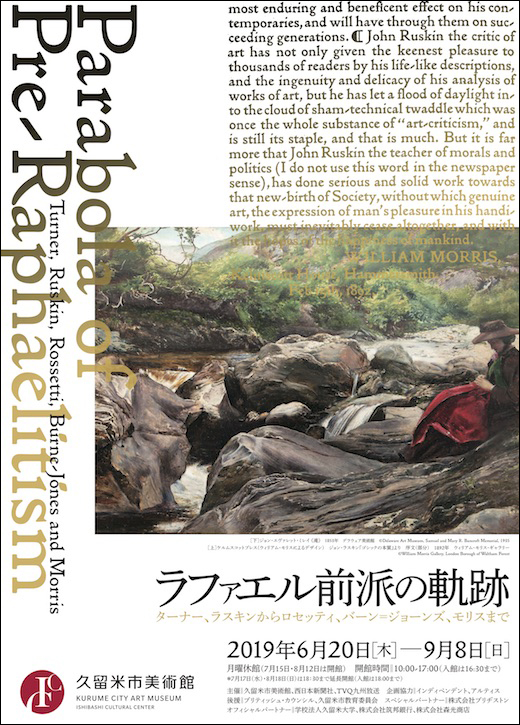
Parabola of Pre-Raphaelitism: Turner, Ruskin, Rossetti, Burne-Jones and Morris2019.06.20(Thu)-2019.09.08(Sun)
“I do not want art for a few.” The British art critic John Ruskin (1819-1900) defended young artists deviating from conventional academicism such as J. M. W. Turner, who innovated landscape painting, and prompted the germ of the Arts and Crafts movement, which was to spread on a worldwide basis. Introduced here are approximately 150 examples of paintings, rare books, furniture, stained glass, tapestries, etc. related to Ruskin by Dante Gabriel Rossetti, John Everett Millais, Edward Burne-Jones, William Morris, and others, through which the progress from the birth of the “Pre-Raphaelites” to their joint efforts, friendship, and evolution will be surveyed.
Edward Burne-Jones, The Tree of Forgiveness, 1881-82 ©National Museums Liverpool, Lady lever Art Gallery -
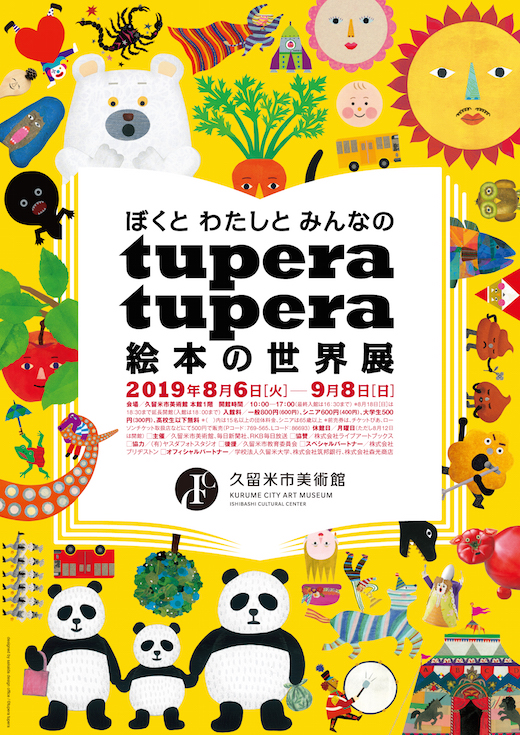
Exhibition of tupera tupera’s Picture Book World for You, Me & Everyone2019.08.06(Tue)-2019.09.08(Sun)
- First Floor
Tupera tupera is an artist duo consisting of Kameyama Tatsuya and Nakagawa Atsuko. They are active in wide-ranging genres including picture books, illustrations, animation, stage art, and the space design for “Katachi no mori” in Kurume City Plaza. Their works made by cutting and pasting paper and decorating in a variety of colors and shapes are stylishly designed but also brimming with humor and captivate many people. This is their first major exhibition, in which, centering on the original pictures for their representative picture books, their variegated activities including three-dimensional works, illustrations, and video works will be introduced.
©tupera tupera -
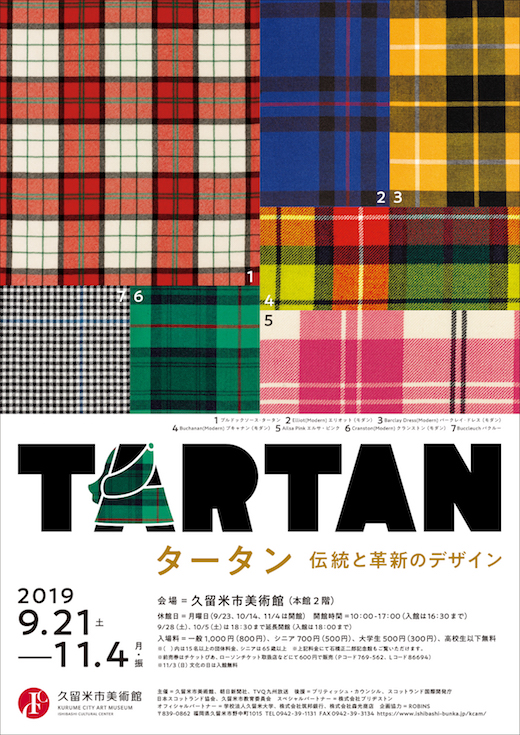
Tartan: Traditional and Innovative Design2019.09.21(Sat)-2019.11.04(Mon)
Tartan is a textile that was developed in northwestern Scotland. Although their ubiquitous designs are widely known not only in fashion but also in daily goods and interior design, tartan itself is not so well-known. In this exhibition, through approximately 100 pieces of different tartan fabrics, which hitherto have not been seen very much in Japan, and artworks and other materials related to tartan such as works by John Kay (1742-1826), a caricaturist who was active in Edinburgh in the first half of the nineteenth century, the historical, social, and cultural background will be introduced in an attempt to explore the significance and charm of tartan from various viewpoints.
-
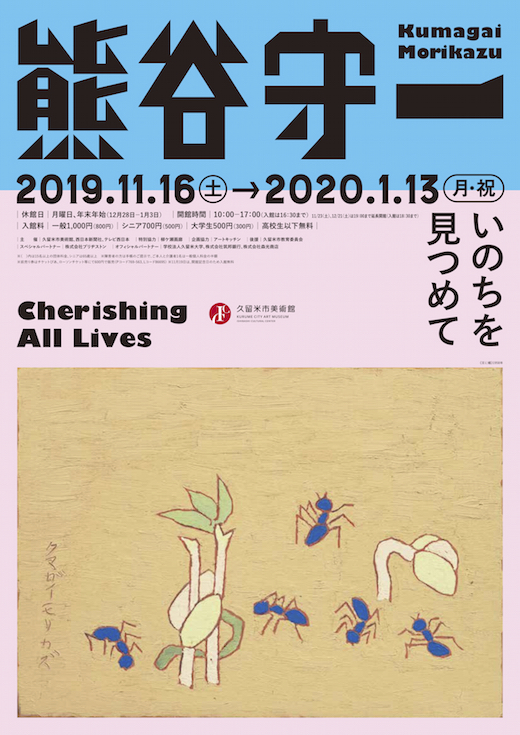
Kumagai Morikazu: Cherishing All Lives2019.11.16(Sat)-2020.01.13(Mon)
Kumagai Morikazu (1880-1977) was born into a wealthy family in Gifu. Aspiring to become a painter, he entered Tokyo Fine Arts School in 1900. While being taught by Kuroda Seiki and others, he also developed a friendship with his classmate Aoki Shigeru. During the more than seventy year-long artistic career which began from there, Morikazu’s artistic style continued to constantly undergo gradual change. It was from past age seventy that the so-called “Morikazu style” of flat color planes and distinct contours was completed. This exhibition traces the full view of Morikazu’s artistic career from the early stage to his final years and through his charming pictures of flowers and insects, the artist’s eye on tiny lives and his creativity are examined.
-
The 100th Anniversary of Diplomatic Relations Between Japan and Poland: Chopin—Portrayed in 200 Years of Images2020.02.01(Sat)-2020.03.22(Sun)
The composer Frédéric Chopin (1810-1849), known for his exquisite tunes, was born in Poland and moved to Paris. The short but passionate life and music of this “poet of the piano” has long been adored by many people. Introduced here are approximately 250 items including rare materials such as an autograph manuscript (score), which is being shown in Japan for the first time, paintings. sculptures, photographs, books, etc. The handwritten scores and letters kept by the Fryderyk Chopin Museum at the Fryderyk Chopin Institute in Warsaw seem to convey the composer’s breathing even today. Multilateral approaches including the International Fryderyk Chopin Piano Competition, related animations, and actual performances will be presented so that you can fully “experience Chopin.”
